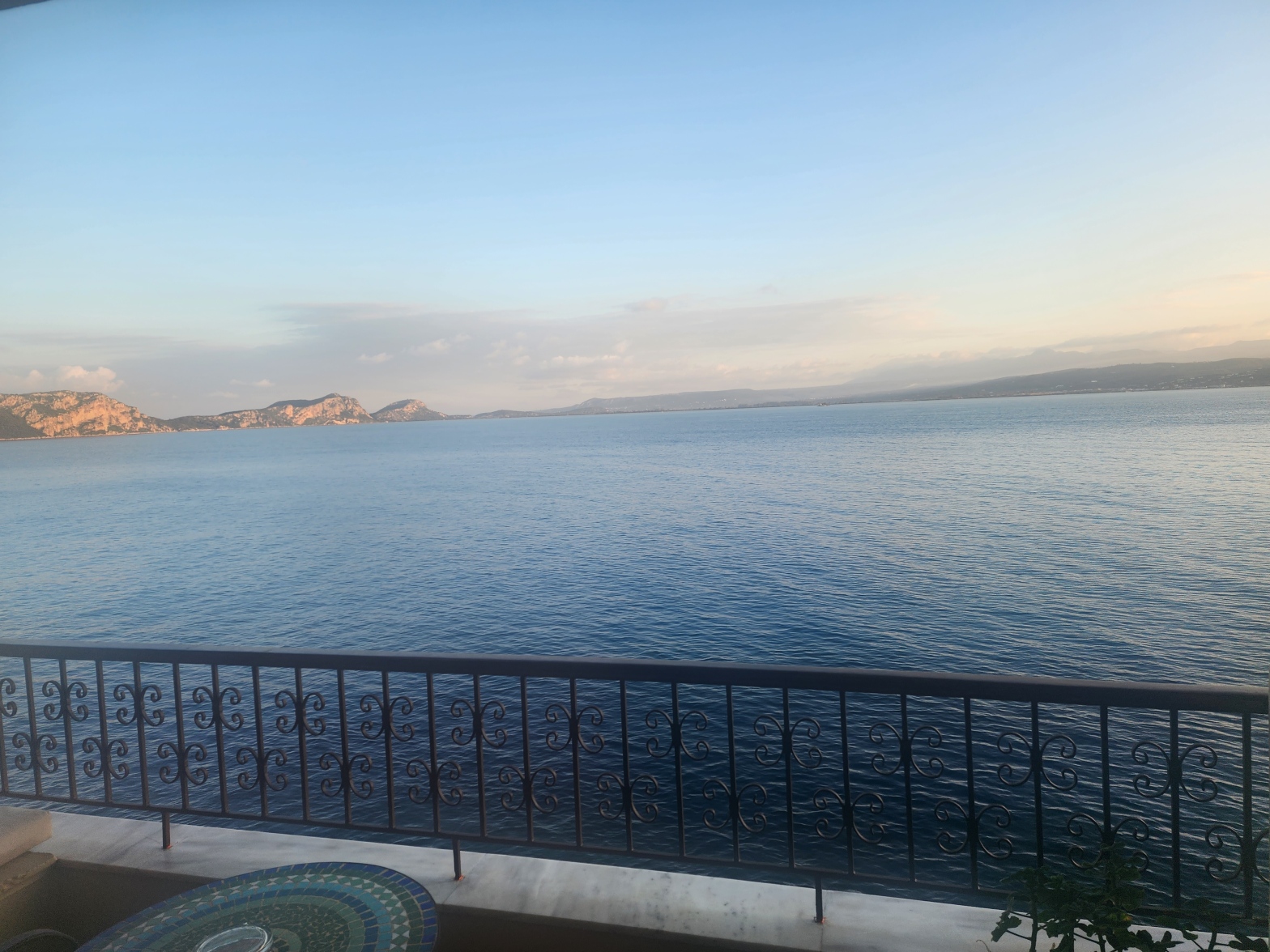Another beautiful day in the Peloponnese began the view out our hotel window over the water looking tranquil in the rising sun. Our first stop was the fortress of Pylos and the small museum. The view over town was gorgeous.
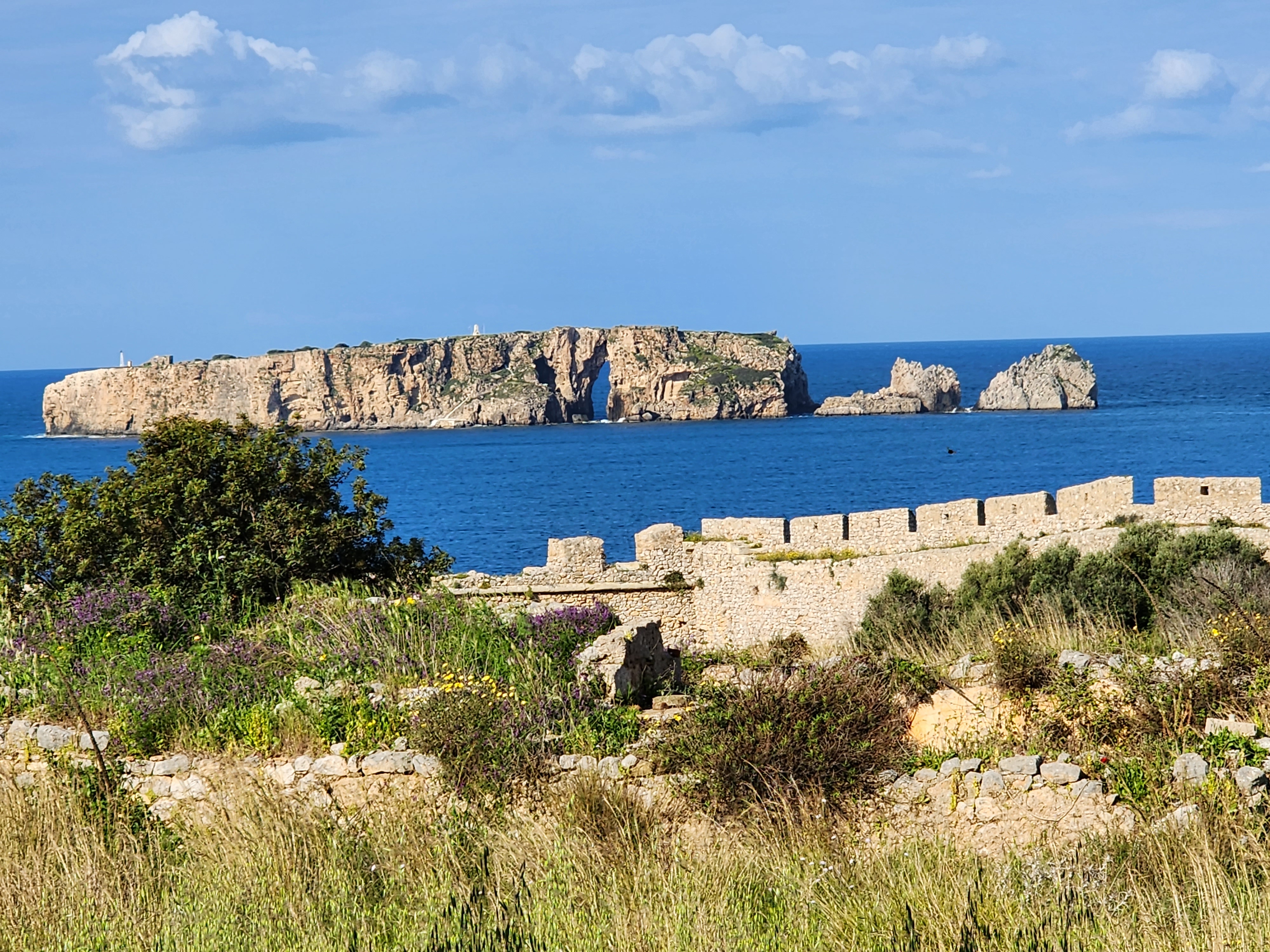
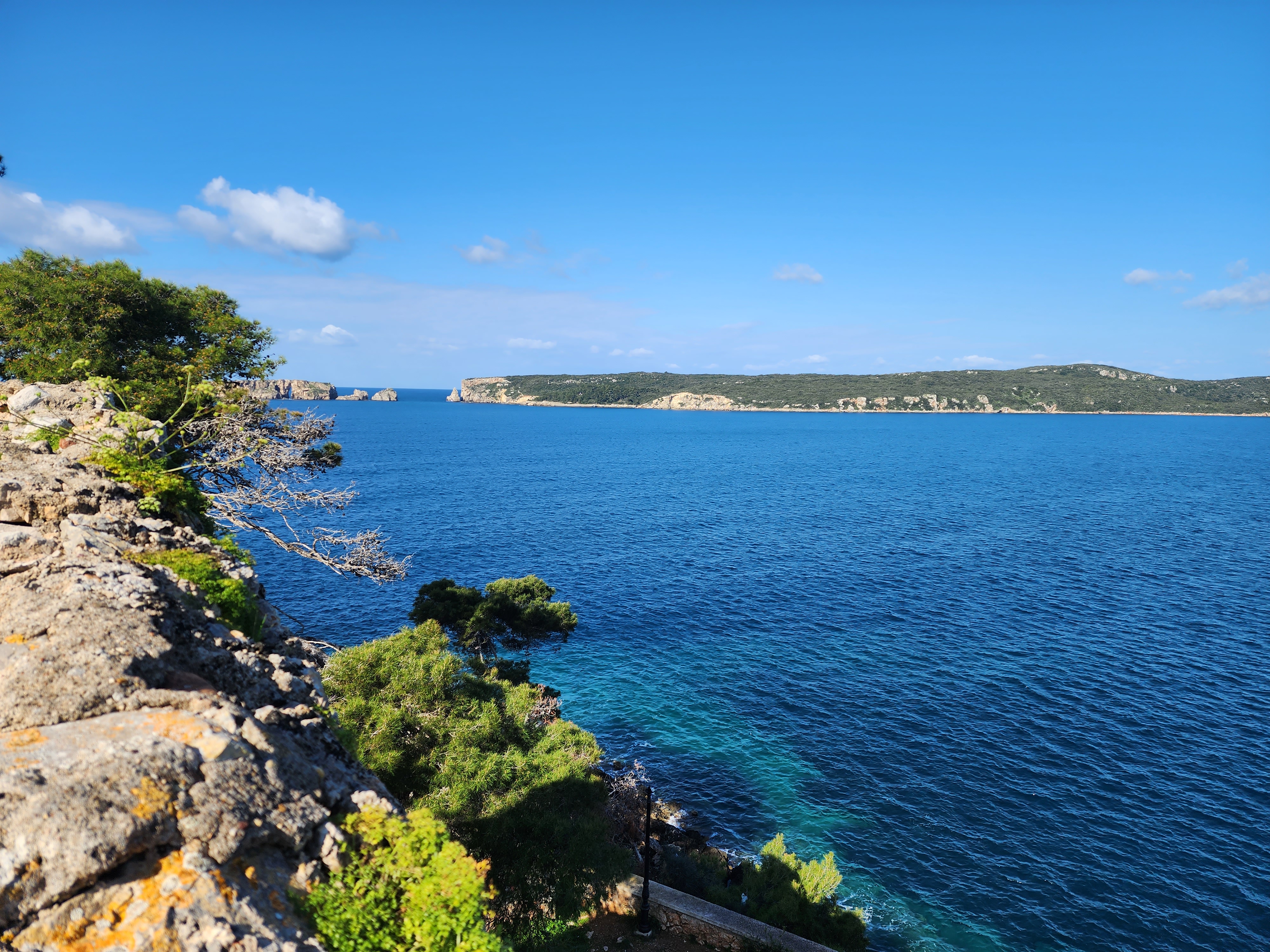


The museum had a few lovely examples of the fine crafts that were traded in and out of Greece in ancient times, glass vessels, fine pottery, a bathtub similar to the one we saw in Nestor’s Palace, and a rather insouciant god leaning on a tree trunk (Bacchus, naturally).
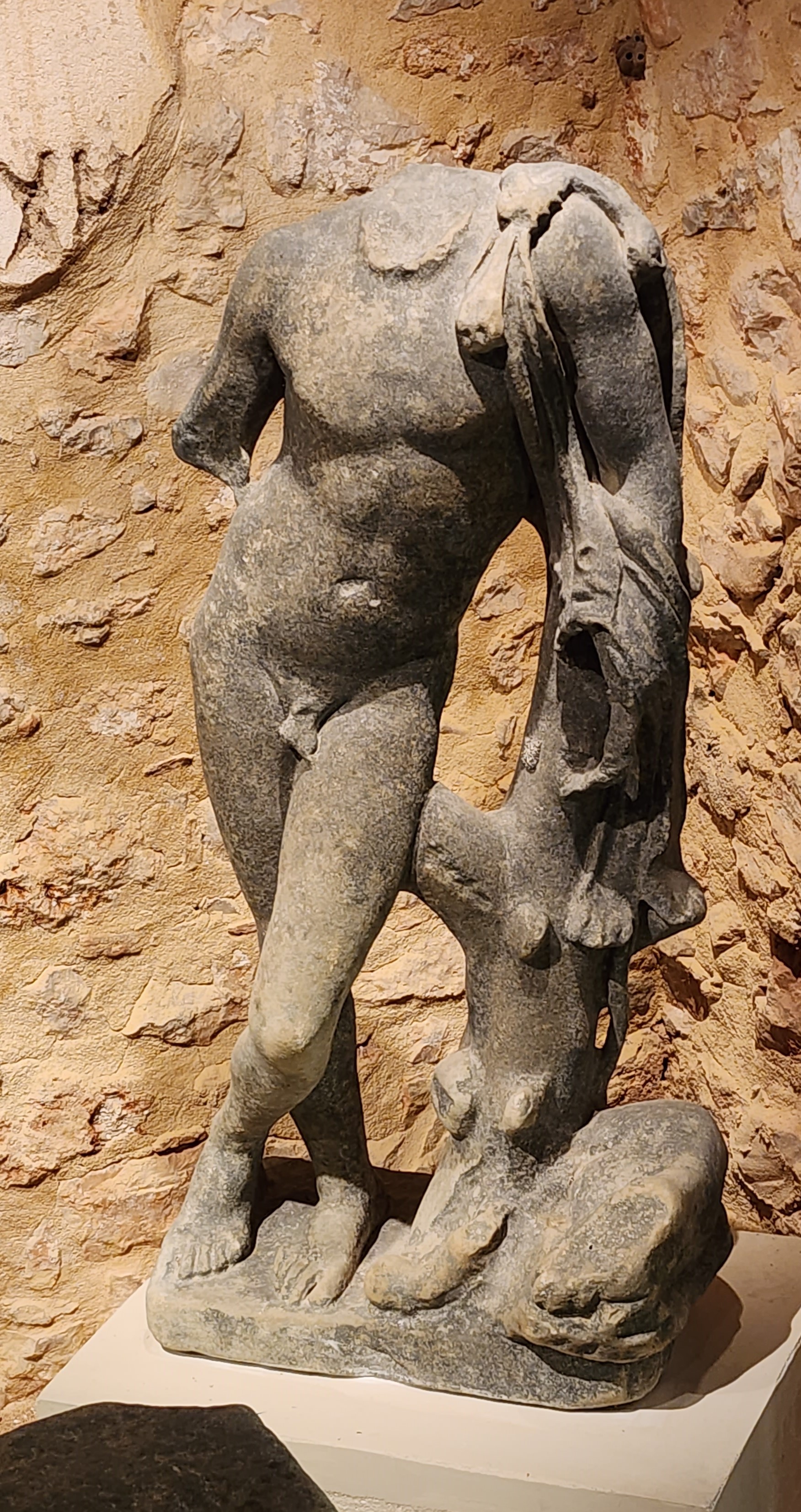
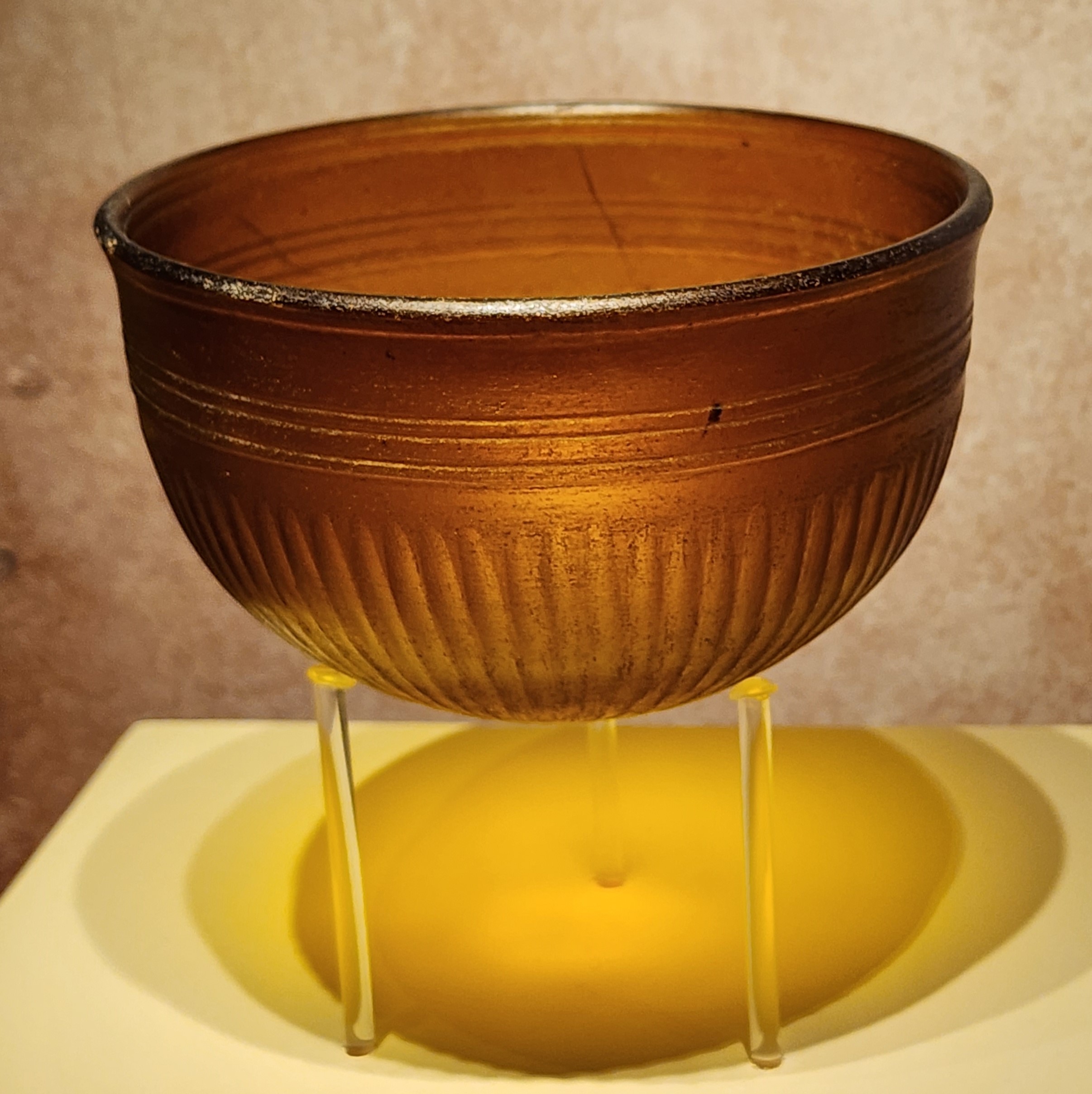
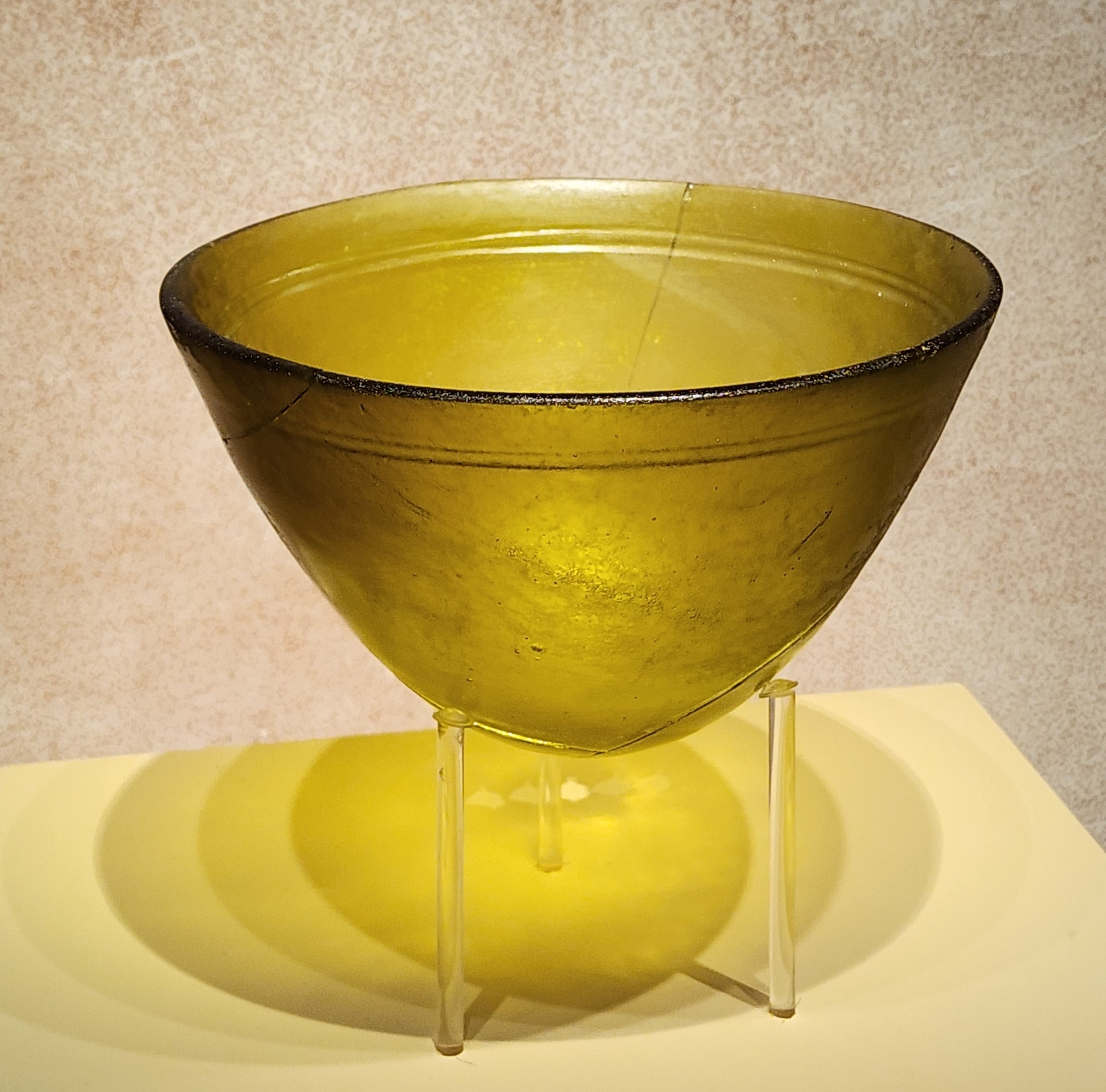
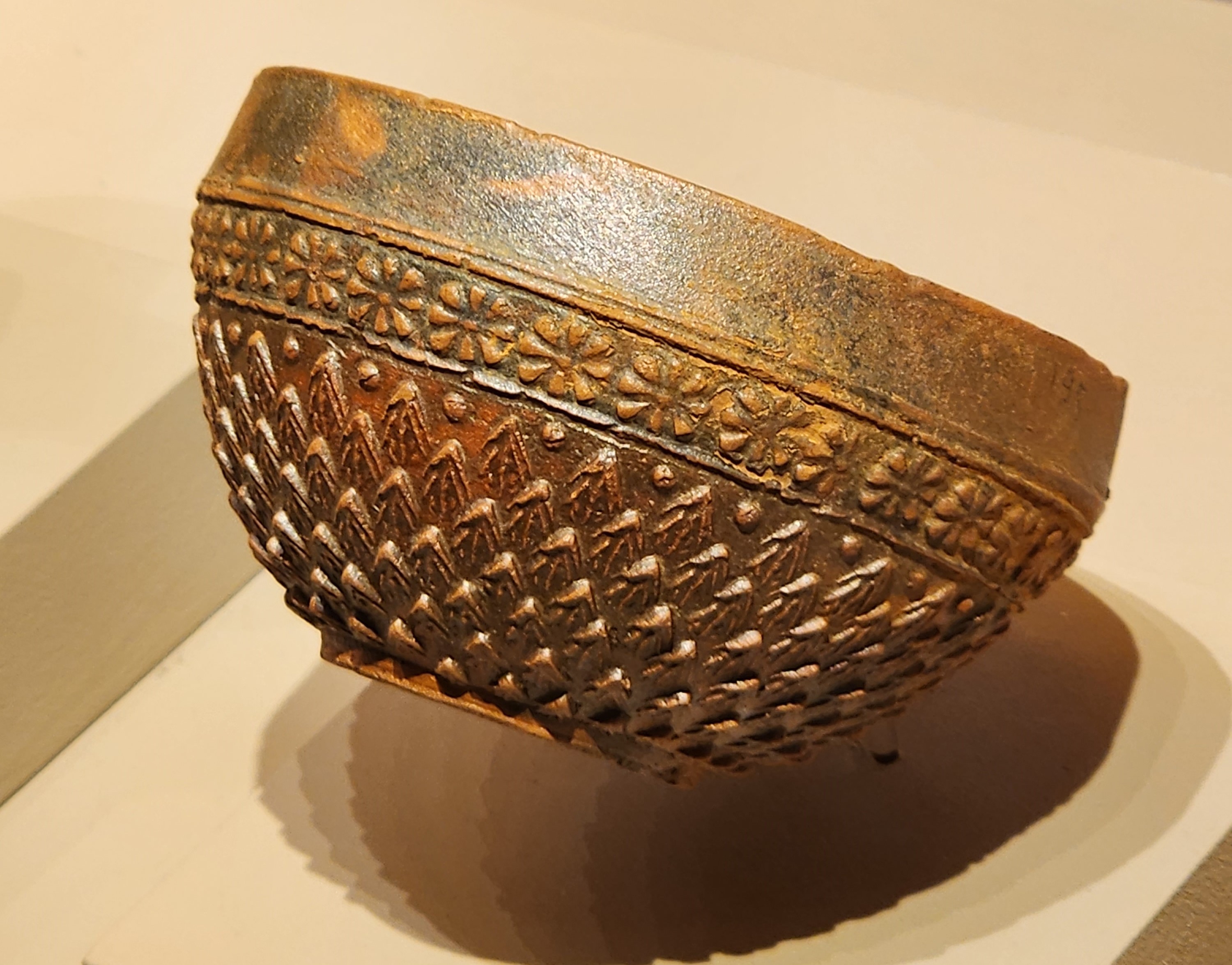
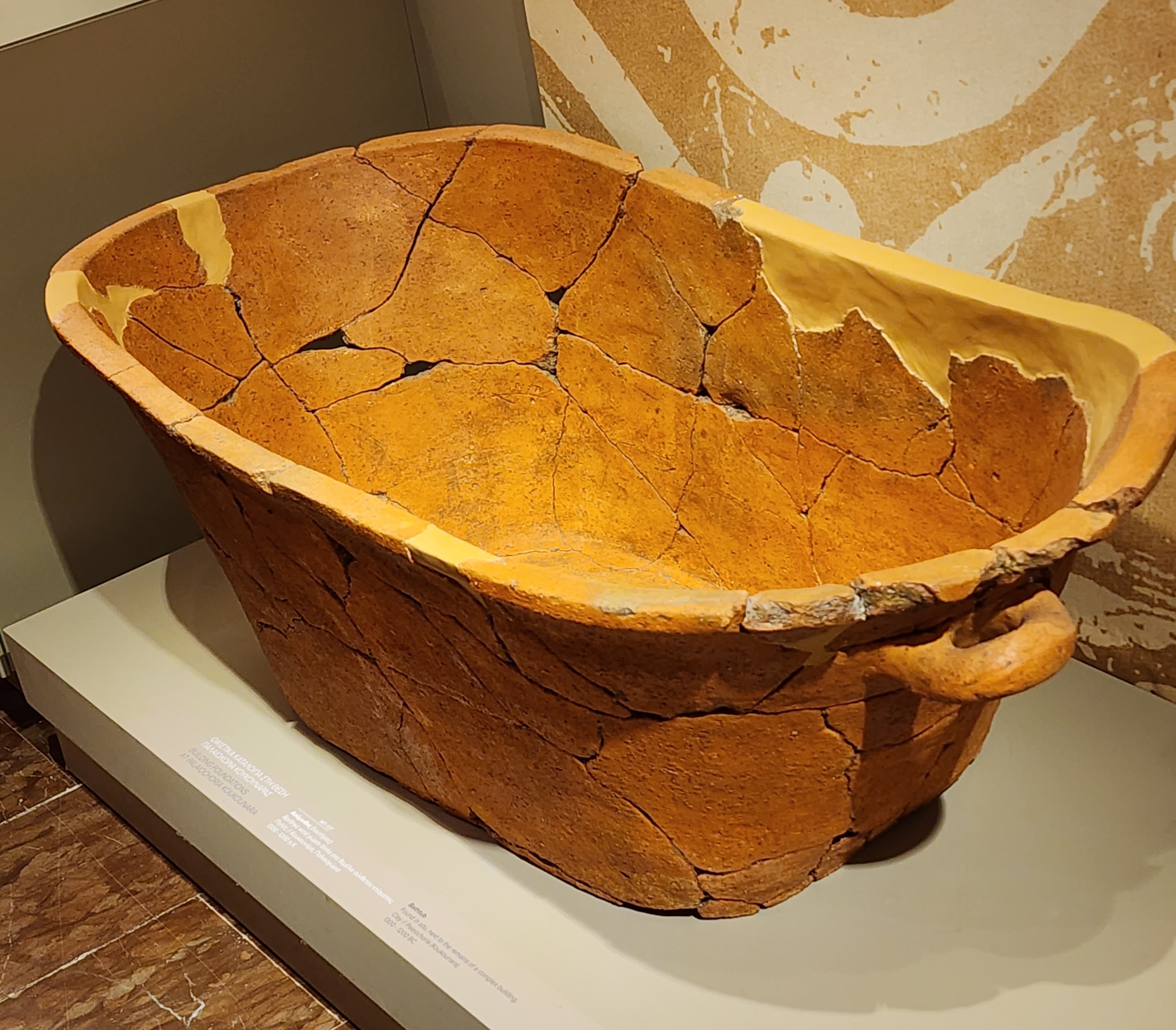

On our way out of Pylos, we stopped at the beach that was probably the “sandy Pylos” mentioned by Homer. The modern city is on a rocky promontory, but along this nearby stretch of coast there are beaches where boats could have landed easily, and a large marshy area that would have been a shallow bay two thousand years ago.
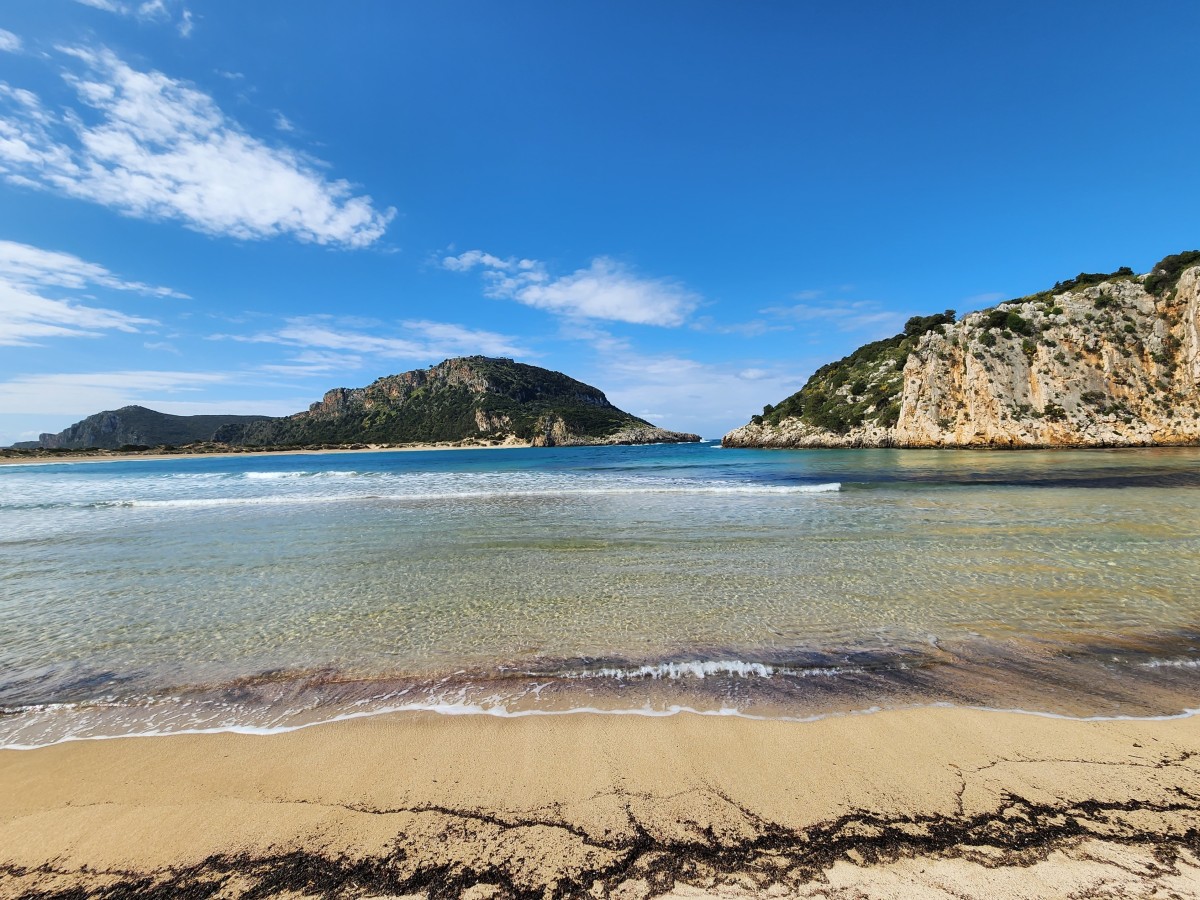
It’s a beautiful spot for birdwatching. We saw a greenfinch, a Sardinian warbler, and a woodchat shrike with a bright red head in just a few minutes. We were on our way to Olympia, so had to tear ourselves away from the beach and the birds.
We stopped in Olympia for lunch and then moved on to visit the site and the museum. The ruins of Olympia are enormous. The original games were part of a religious festival in honor of Zeus. There is a sacred precinct, and a huge temple of Zeus. To support the athletes who lived and/or visited, there was a large gymnasium, a palestra (an open area surrounded by colonnades where wrestlers practiced), and a very large stadium. The site was named Olympia after the home of the gods, Mt. Olympus in mainland Greece, as another way to honor Zeus. 776 BC is considered the date of the first Olympic Games, though there is discussion of whether athletic competitions may have been held much earlier there, and whether there was continuity in the games. Olympia has the distinction of being considered the home of Olympic competition, whatever details may turn up over time.
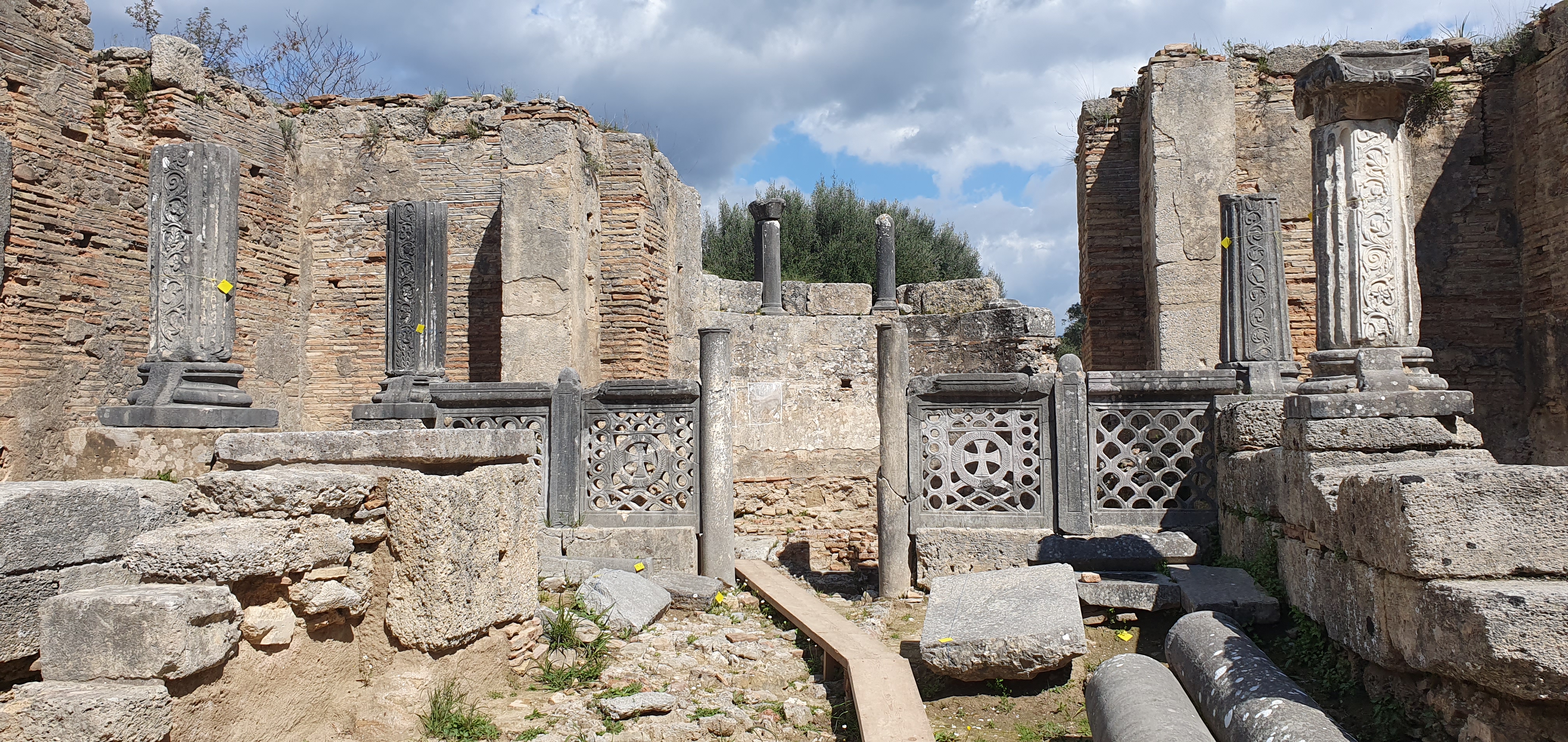
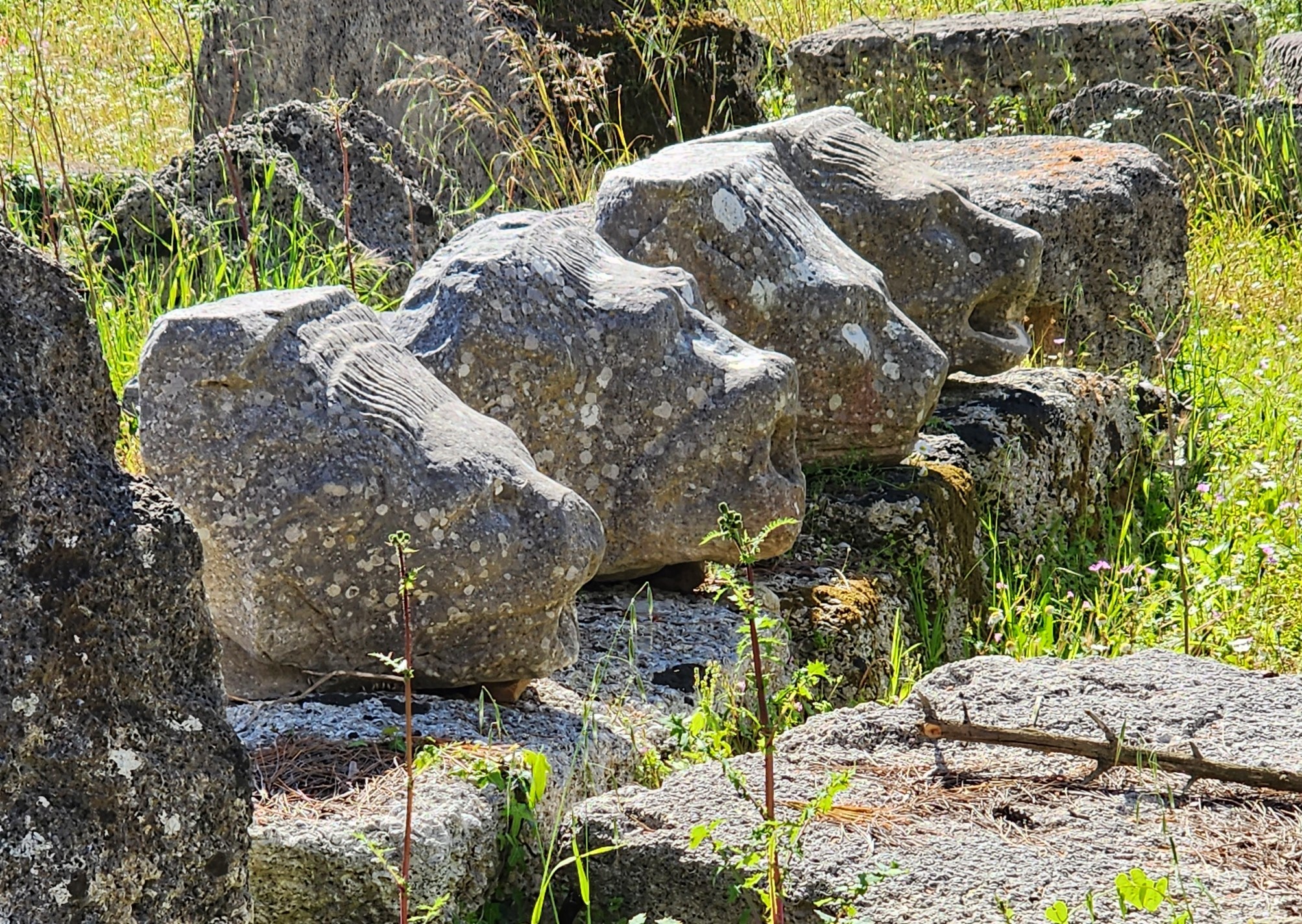

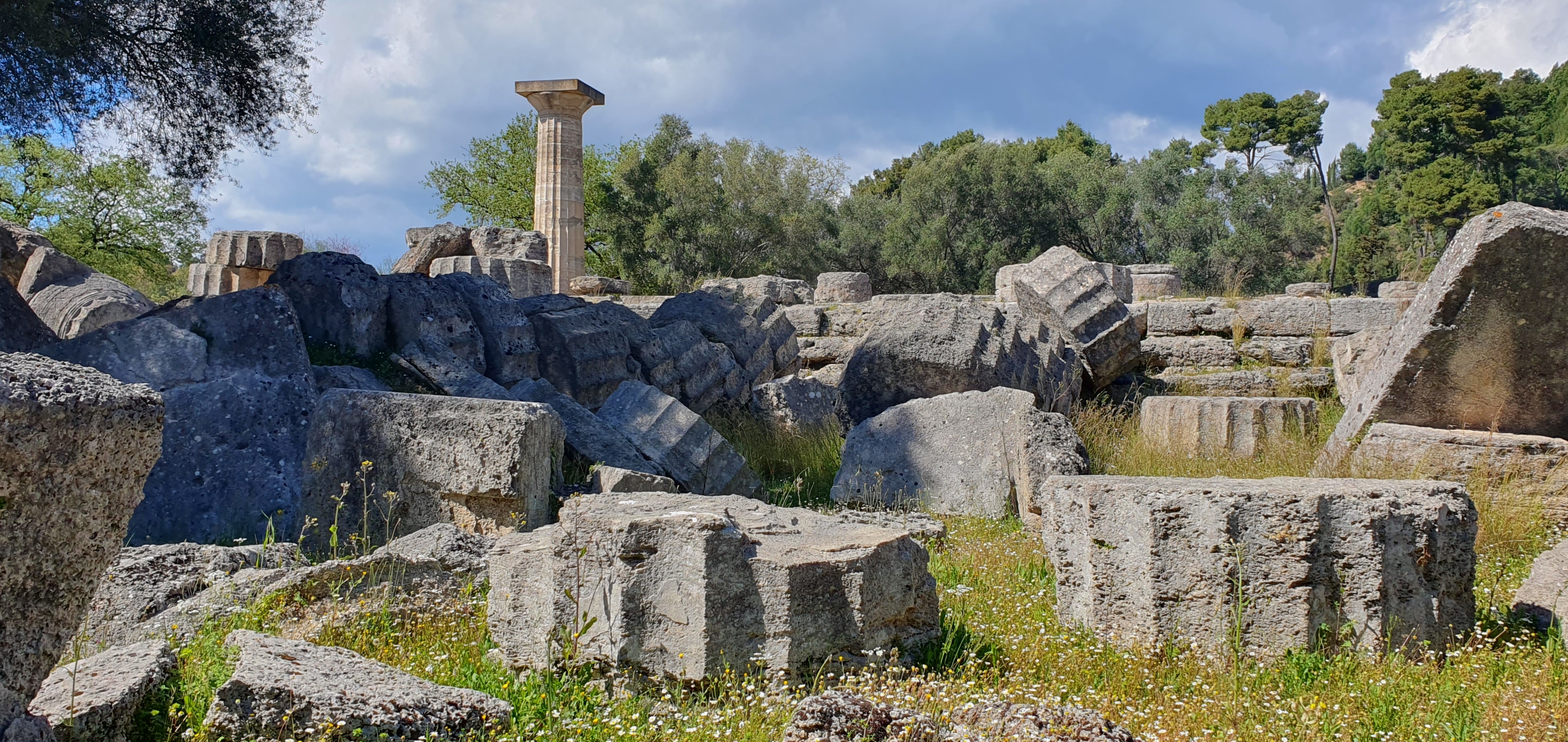
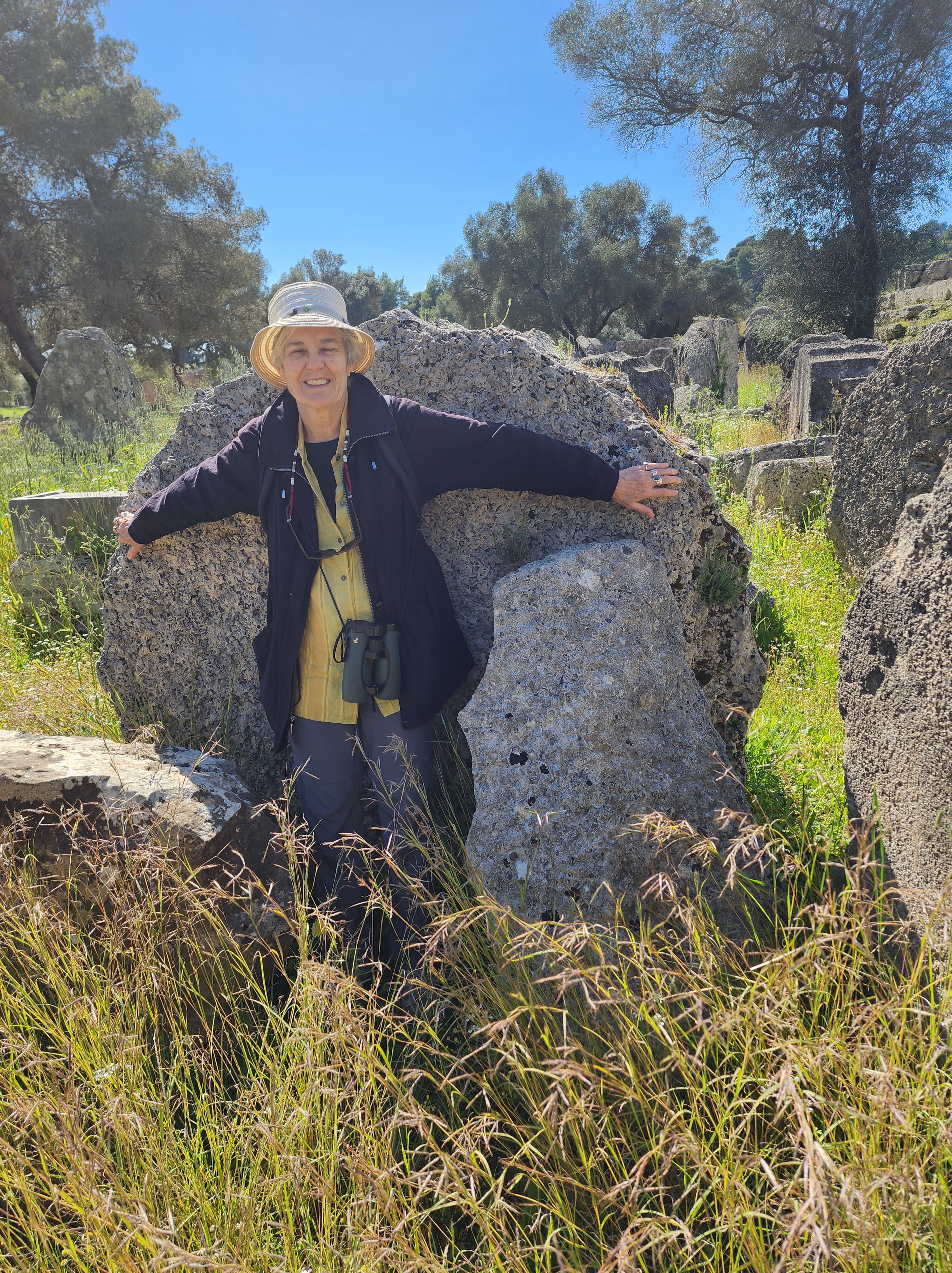
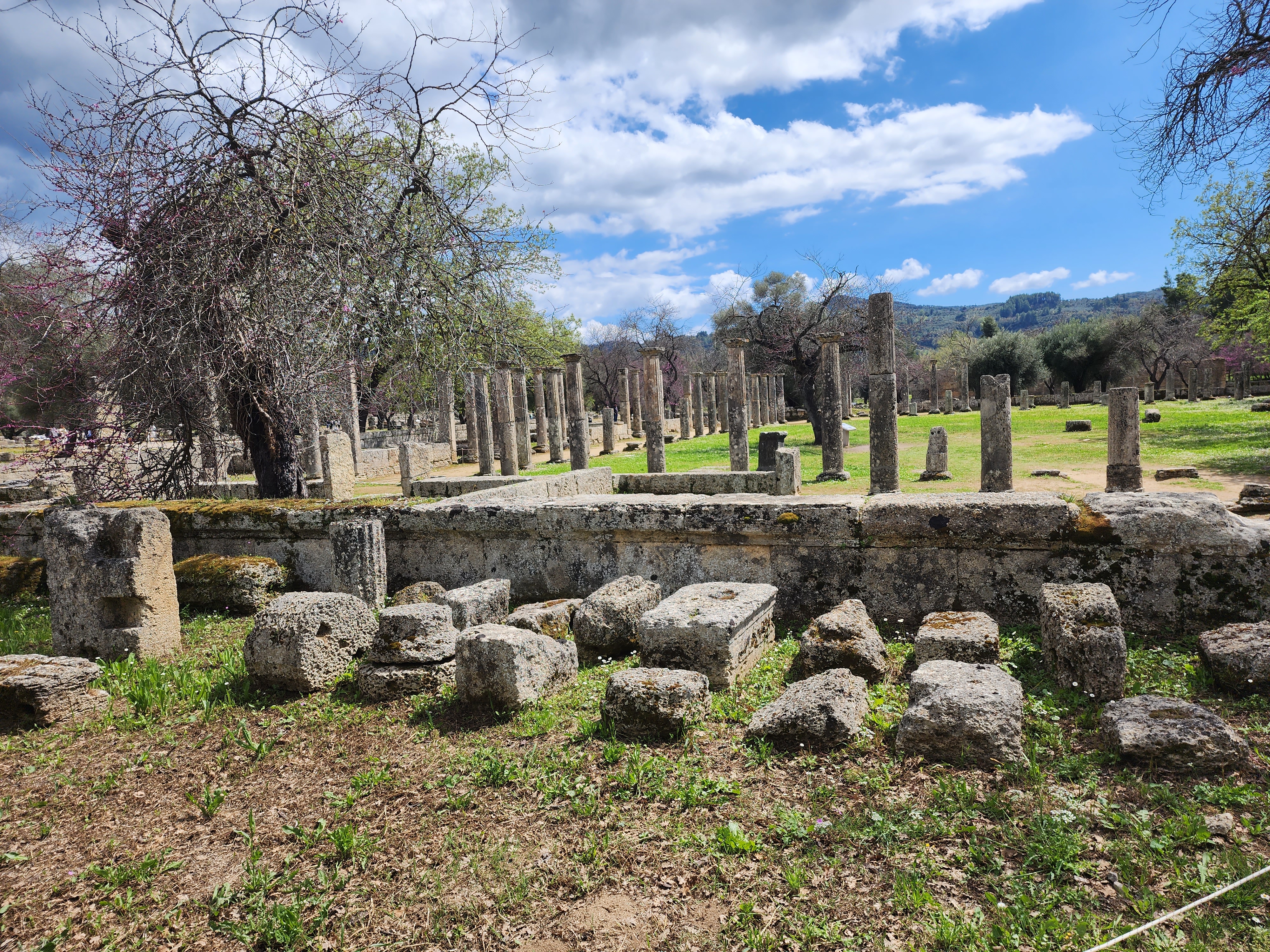
The Olympic Games were held every four years through AD 393. Rome conquered Greece during the 2nd century AD and the games dwindled away after that. Roman emperor Theodosius I banned all pagan cults, and some interpret that to mean the Olympic games were banned, though there are Roman additions to the site that include Christian symbols. The top photo above shows Roman construction with crosses in the decoration.
The stadium at Olympia was the heart of the Games, and had its entry tunnel, as every stadium did.
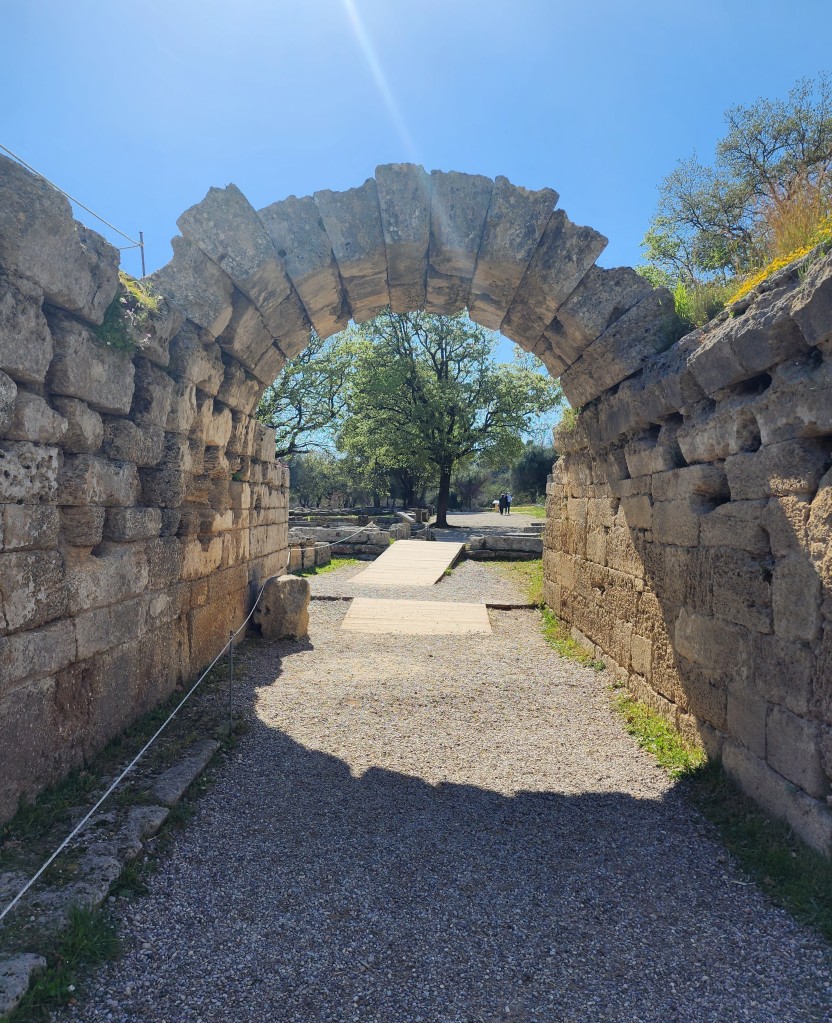
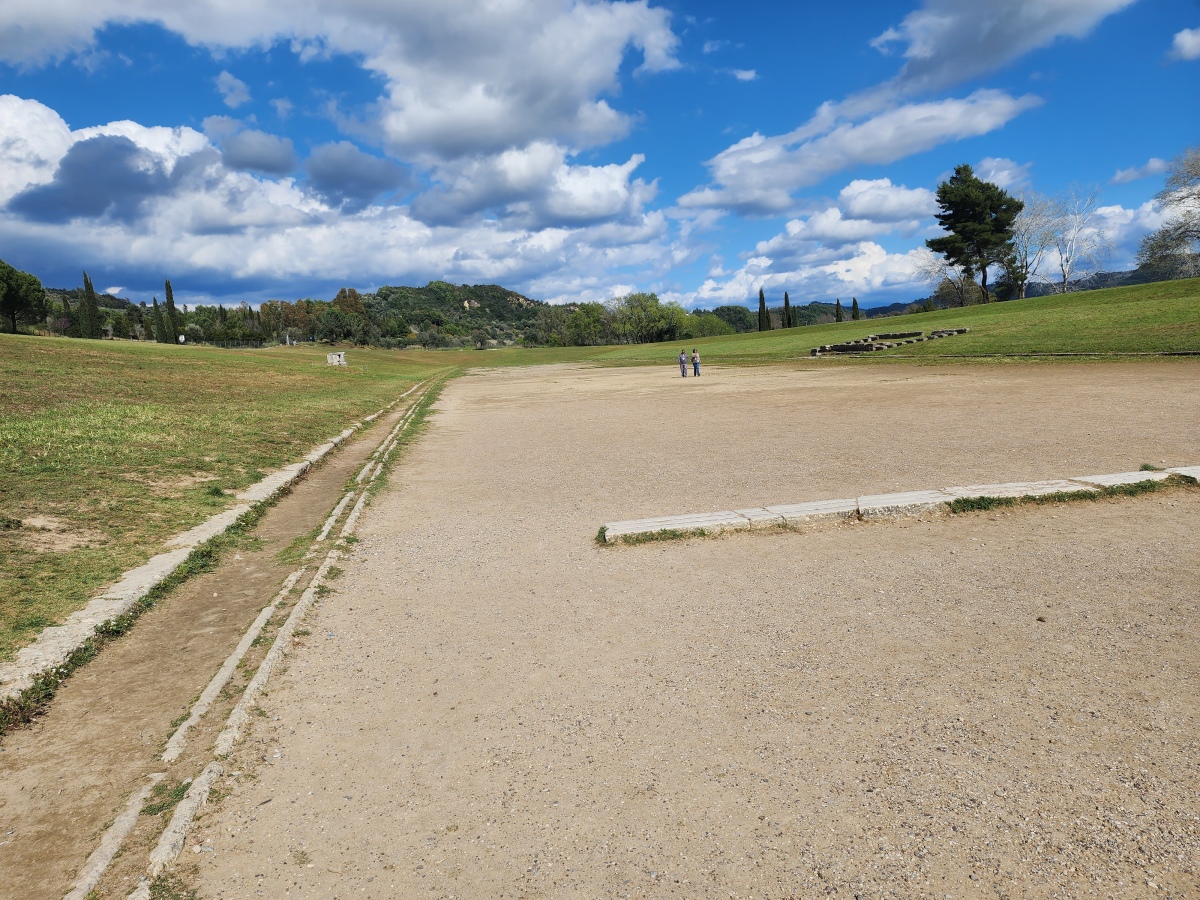
Jonathan and Aristotle staged a brief reenactment of the original Olympic footraces.
The museum at Olympia is full of objects–as a religious center, people brought offerings, often small statues, and these have been excavated and picked up from the area of the site and its surroundings.
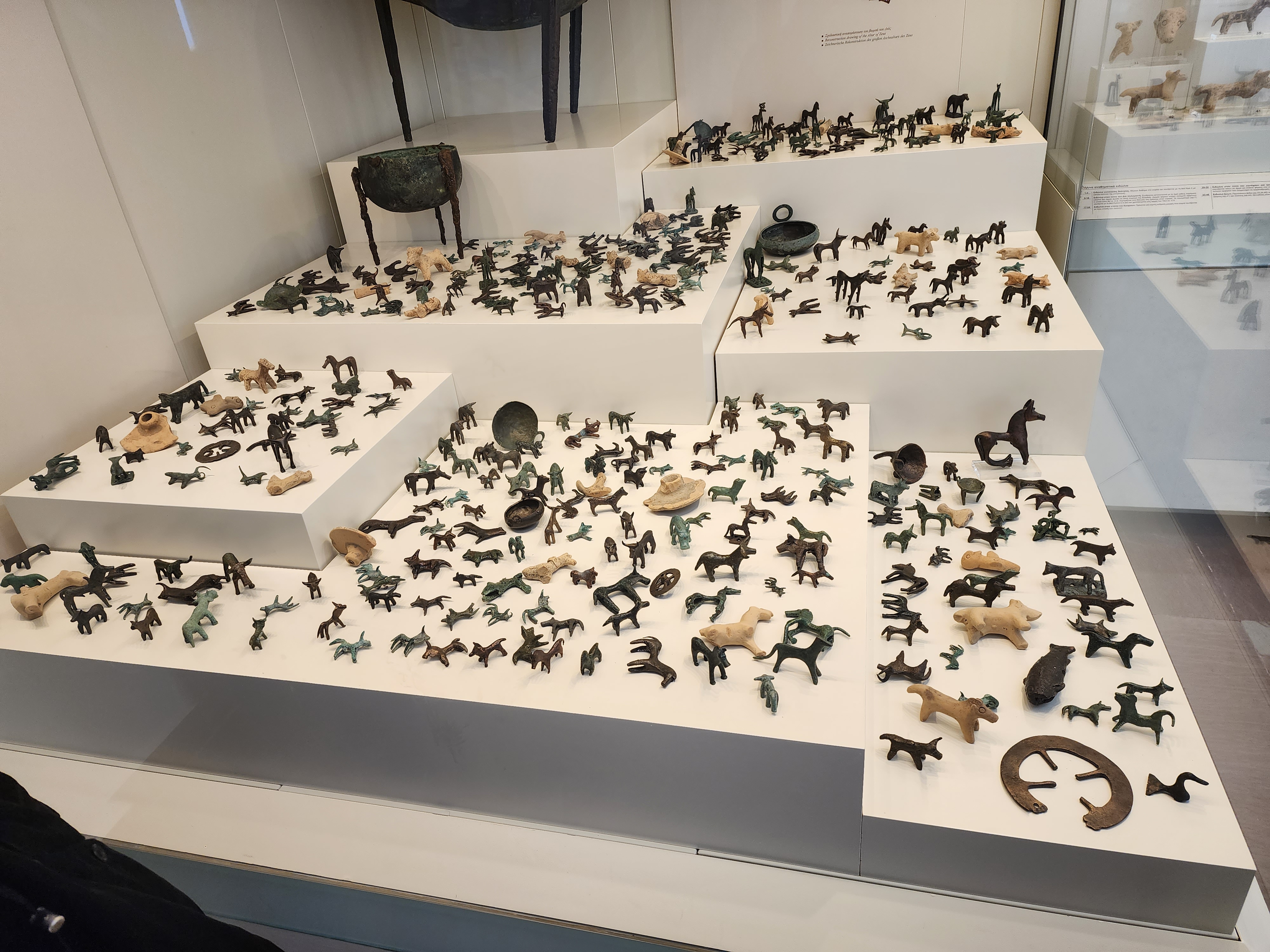

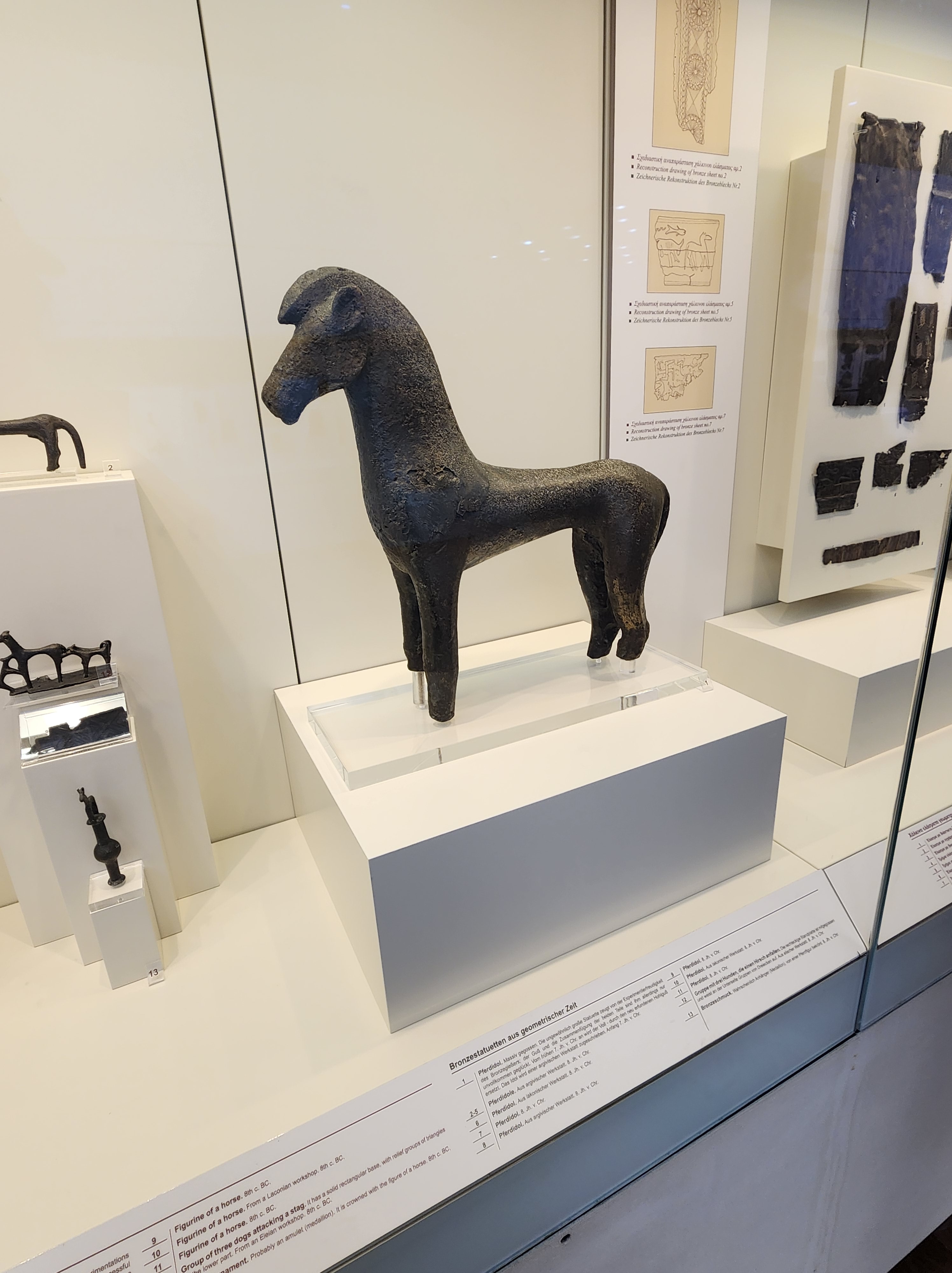
Small, medium, and large offerings of horses by visitors to Olympia–possibly praying their chariot will win the race.

Sculpture on the pediment of the Temple of Zeus at Olympia is much like the sculpture on the Parthenon. The East pediment depicts Zeus with Pelops and Oenomaus. Pelops killed King Oenomaus in a chariot race to win the hand of the king’s daughter Hippodamia.

The West pediment shows the battle between the Lapiths of northern Greece and the Centaurs (half man, half horse). This was symbolic of the Greek victory over barbarians, or perhaps reason over savagery. Both of these pediment sculptural friezes are better preserved than the Elgin Marbles. The battle scenes are wonderfully detailed.

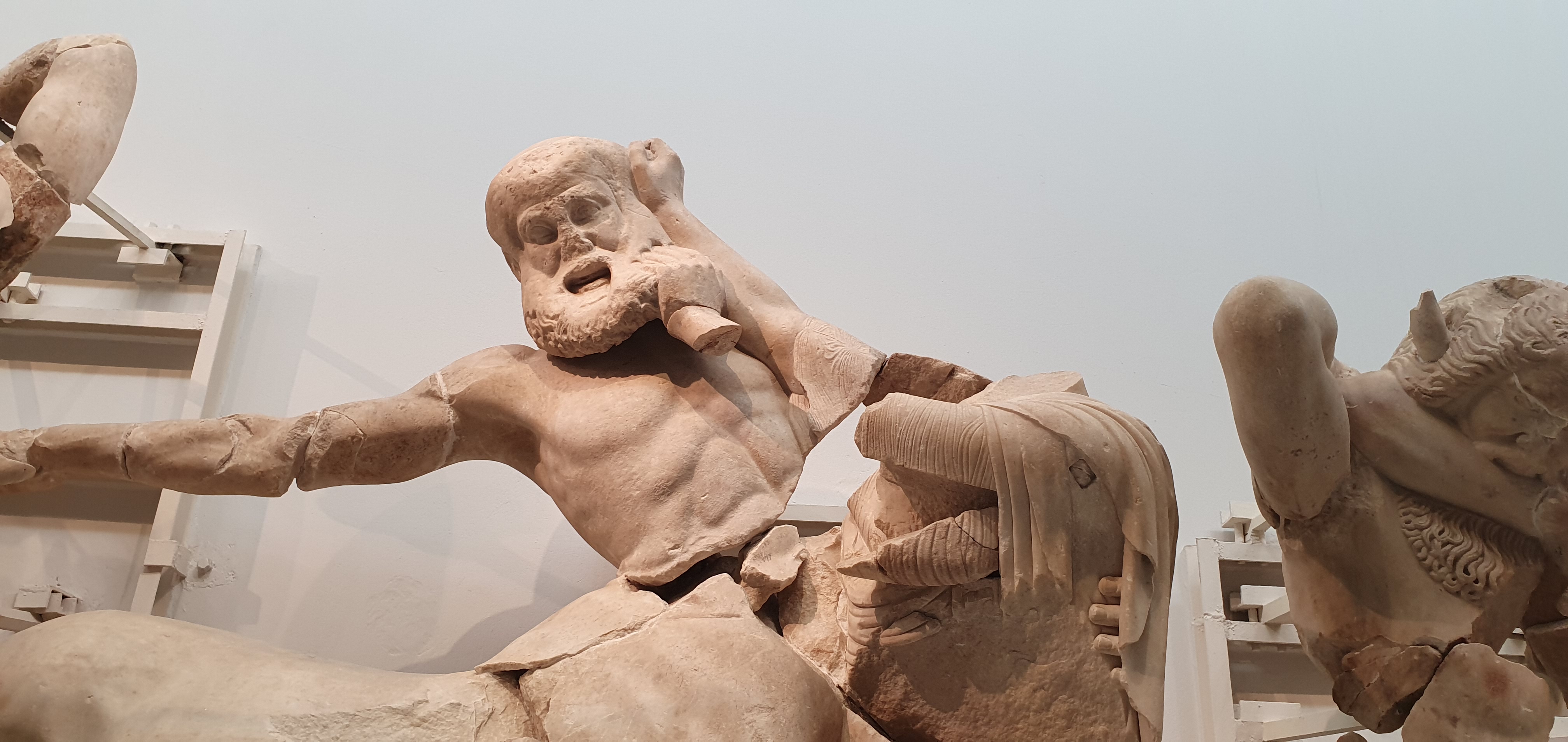
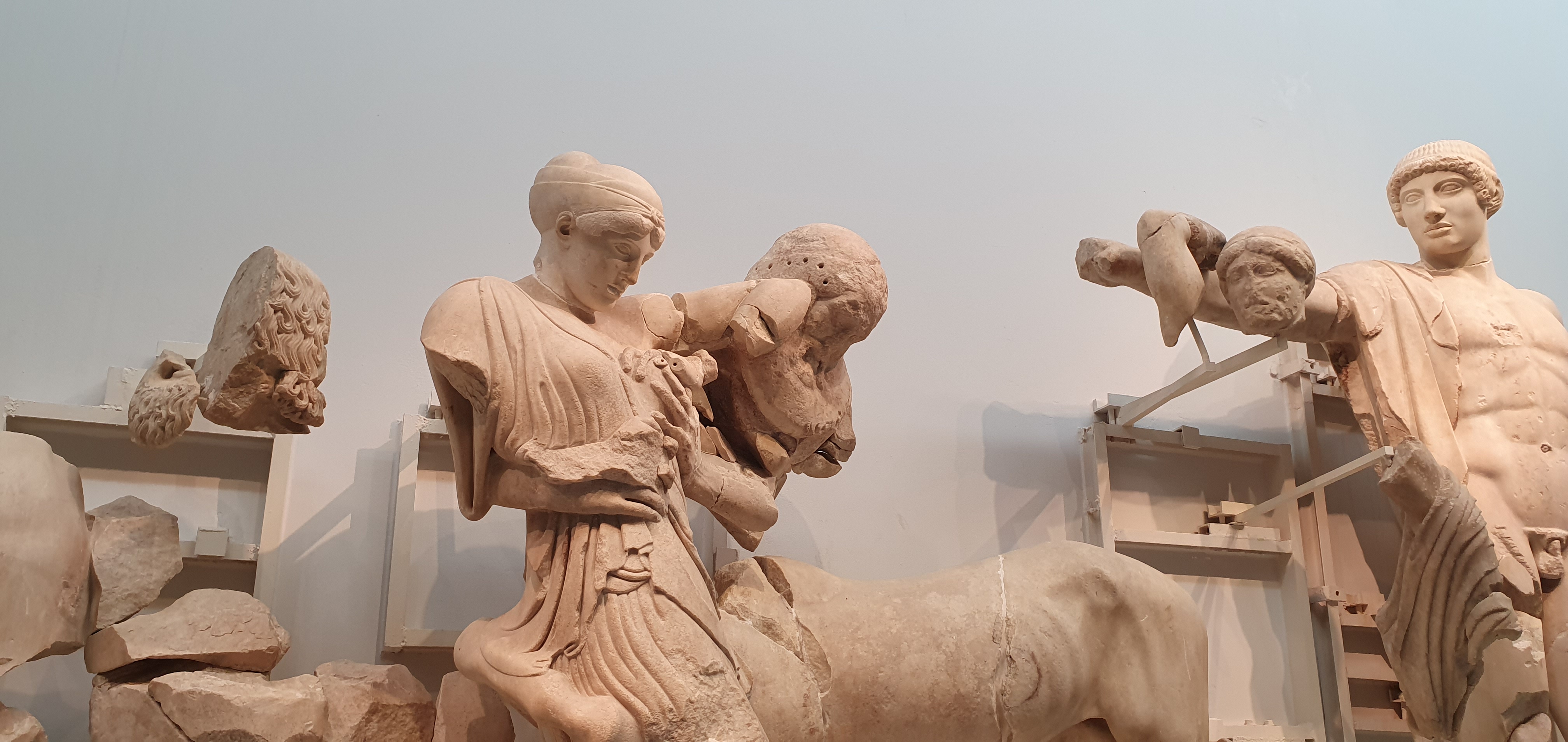
Biting was a technique of the brawlers on both sides, as was pinching, punching, and throwing an elbow.
Exhausted by watching the battle, we retreated to the car and headed for our next stop, Nafpaktos. Like Pylos, Nafpaktos had a different name in the past. It was Lepanto, known for the Battle of Lepanto (1571). Where the battle off Pylos (Navarino) in 1827 was the last fought between sailing ships, the Battle of Lepanto was the last major battle fought between rowing ships that were based on the earlier Roman galleys. After the Greek Revolution, Nafpaktos reverted to its Greek name.
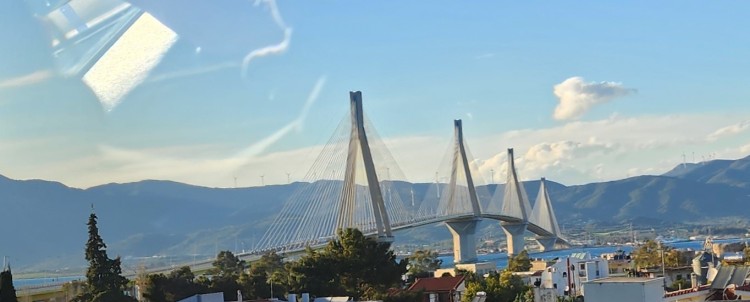
Nafpaktos is across the Strait of Corinth from the Peloponnese, so we bid farewell to the principal area of our explorations by crossing the spectacular Charilaos Trikoupis Bridge–the world’s longest fully suspended multi-span cable-stayed bridge [that’s a mouthful]. It is also very attractive, and has improved access to the Peloponnese since it opened the day before the start of the Olympic Games in Athens in 2004.
We stayed at the Nafs Hotel in a room that overlooked the water. We had a rare evening of not choosing well for dinner at Sousouro, but called it a night after a piece of chocolate cake on the way home.
